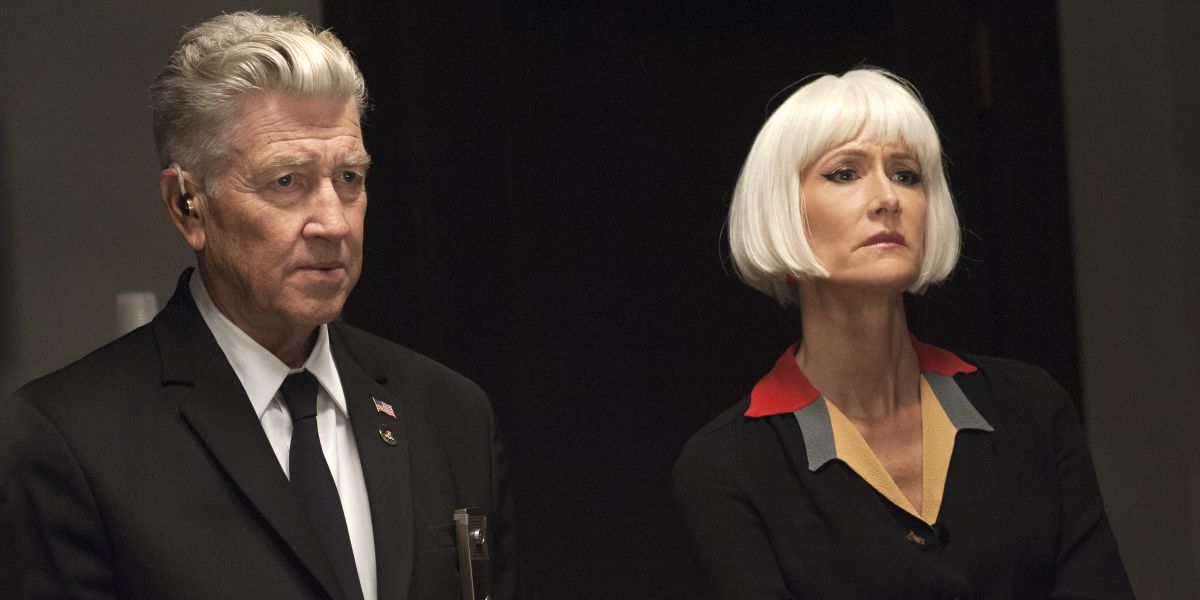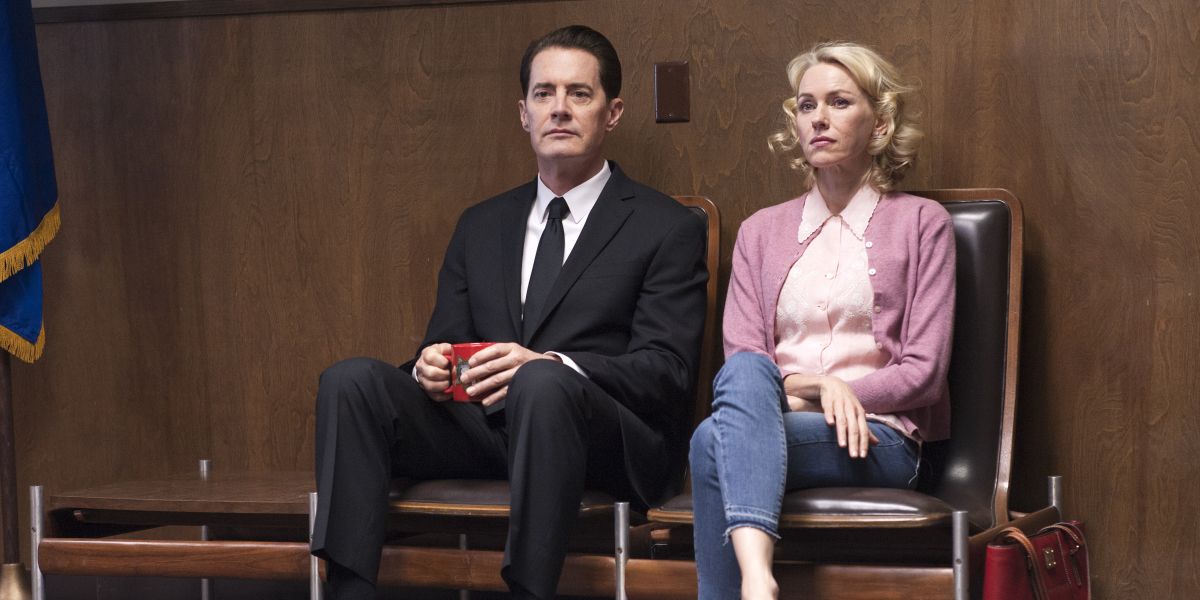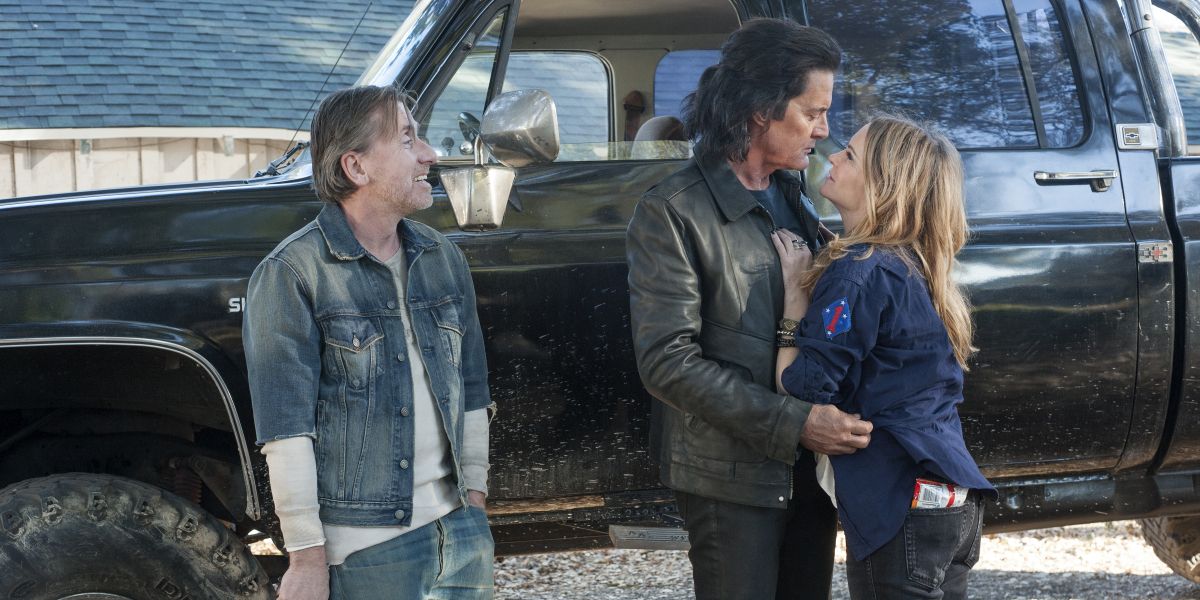After an excursion into the surreal, Twin Peaks returns with a much more plot-focused hour that sees important information disseminated in confounding pieces.
Showtime's timing of Twin Peaks Parts 8 and 9 couldn't have been better. After the visual intensity of the previous episode and its earworm-like "This is the water. This is the well" speech, the week's break for the holiday was almost a necessity, just so viewers could attempt to parse the trippy excursion into the past, or, more likely, simply experience it again and again. The week off also made it easier for the series to shift into a more plot-focused mode, though the jarring transition from the black-and-white nightmare of the Woodsmen to an appreciation of the overwhelming optimism of Major Garland Briggs and his advanced foresight might have been part and parcel for the experience that has been Twin Peaks: The Return so far.
'Part 9' delivers a lot of information to its characters, and it does so in a way that's both fulfilling and infuriating. It's not infuriating in any negative sense, but rather the simple, oftentimes pleasurable frustration of the audience having all the pieces the characters do not, and watching as their misconnections and miscommunications lead them down a path that might expose them to the truth or could potentially lead them to ruin. That's made abundantly clear with the return of William Hastings, whose tearful explanation of what he and Ruth saw when they crossed over into another dimension they called "The Zone" and not only met Briggs, but witnessed a chaotic moment that resulted in his decapitated body and Ruth's head winding up where they did.
Hastings repeatedly pleads for the FBI to believe that what he saw was real, and it's important to note that, with the exception of Albert (naturally), no one really voices any doubts about the veracity of his claim. But they also have no idea what to do with the information, let alone connect it to the search for Cooper (who's flown the coop), or to make sense of the ring found in Brigg's stomach engraved with the names Dougie and Janey-E. The scenario essentially repeats itself when Sheriff Truman, Hawk, and Bobby stop by to question Mrs. Briggs about her late husband (Bobby's father), and she tells them not only did Garland see all of this happening, but he left a metal cylinder in a secret compartment in red chair containing coordinates and instructions to find "Jack Rabbits Place", a location that only Bobby would know of.
'Part 9' is incredibly keen on the idea of information and how it's disseminated and understood, and Lynch almost seems to be addressing the challenging nature of the films and TV shows he makes, wherein the audience is oftentimes kept in the dark wondering how or if all the pieces fall together, just as so many of the characters in 'Part 9 ' are. That's part of the beauty and appeal of Lynch's work and why people will be parsing these 18 episodes of television for decades to come, just as they have the previous two seasons of Twin Peaks and films like Blue Velvet, Mulholland Drive and more.
It's debatable whether or not Lynch was being meta about miscommunication, misinformation, and misinterpretation, but it's hard not to make that kind of connection (right or wrong) after an episode that was as fascinatingly opaque as 'Part 8' was. On the other hand, the interest 'Part 9' has in Major Briggs is in stark contrast to the frightening corruption, darkness, and confusion that appeared to be birthed into the world in the previous hour.
Garland was, especially in the season 2 premiere, a beacon of optimism. He was not unlike Dale Cooper in that regard, and his fate was, not coincidentally similar to that of the FBI agent, though there's no indication that Garland's time spend in a parallel dimension – The Black Lodge, or The Zone – resulted in an evil doppelganger being introduced into the world in his absence. But that's not really important. What is, is that Garland's belief in things like his son Bobby changing course to live a happy and respectable life have been realized, suggesting Garland's optimism isn't the stuff of dreams or that the decay seeping into the world in the form of BOB (or Dark Dale, if you will), or represented by the two women at the roadhouse with mouths full of rotting teeth, and one with a wicked rash under her arm, cannot be met with opposition.
For an episode that is interested in the dissemination of information, 'Part 9' makes a particularly strong and fascinating case of the push-pull between the kind of societal deterioration represented by those two women (and more) and the propitiousness forecasted by Garland Briggs. If the emphasis on Garland and his foresight is any indication, then Twin Peaks is possibly preparing its characters for a shock when it comes to the double Dale issue, the mystery of the Black Lodge and possibly more. Whether or not they'll know what to do with that information is another matter entirely.
Next: Kyle MacLachlan Knew Twin Peaks Would Be Challenging For Some Fans
Twin Peaks continues next Sunday with 'Part 10' @9pm on Showtime.
Photo: Suzanne Tenner/SHOWTIME



